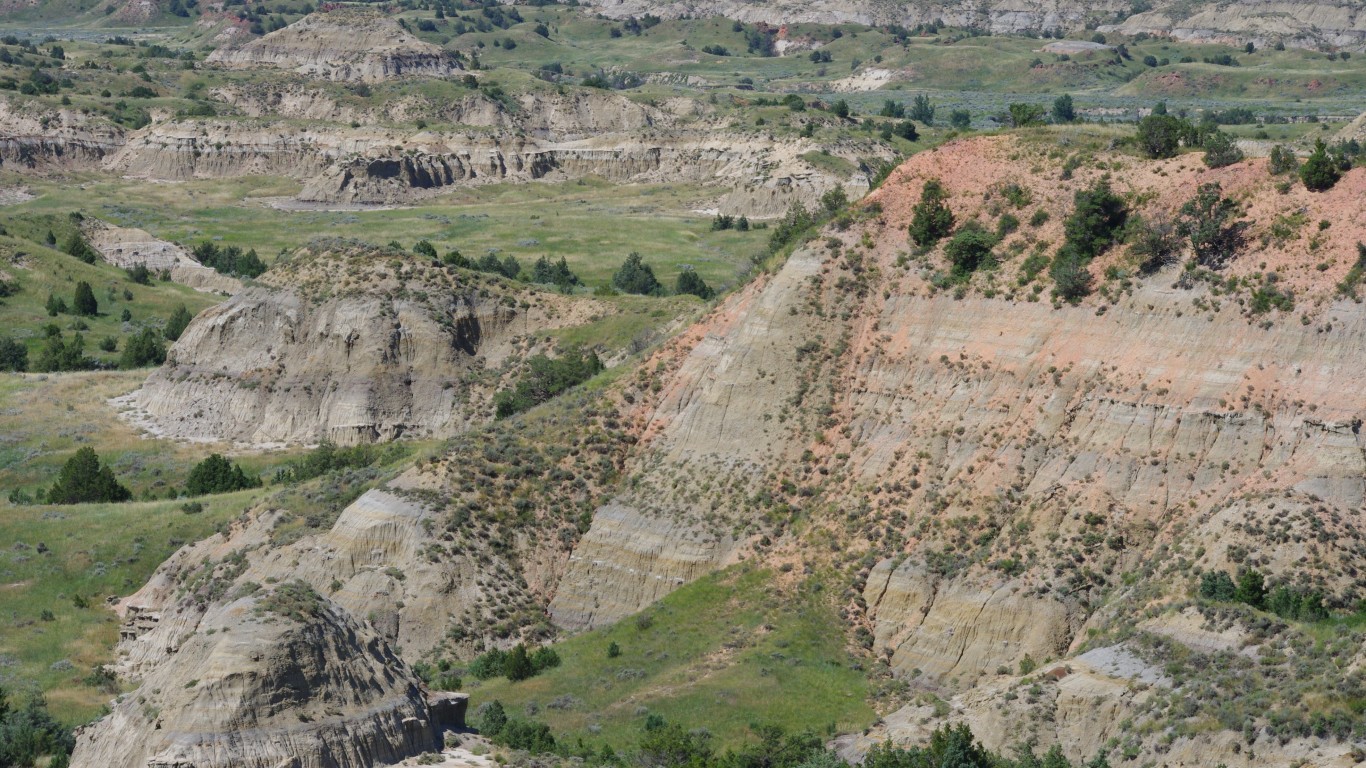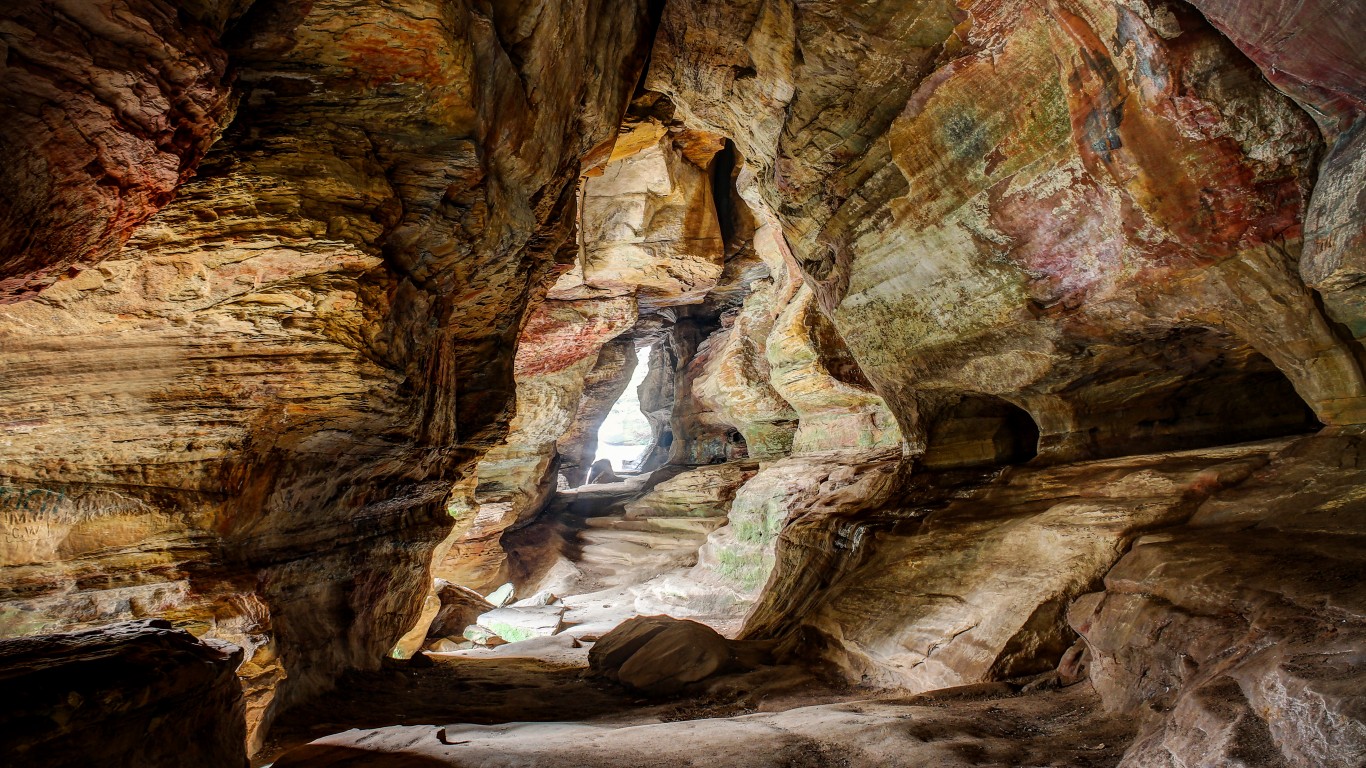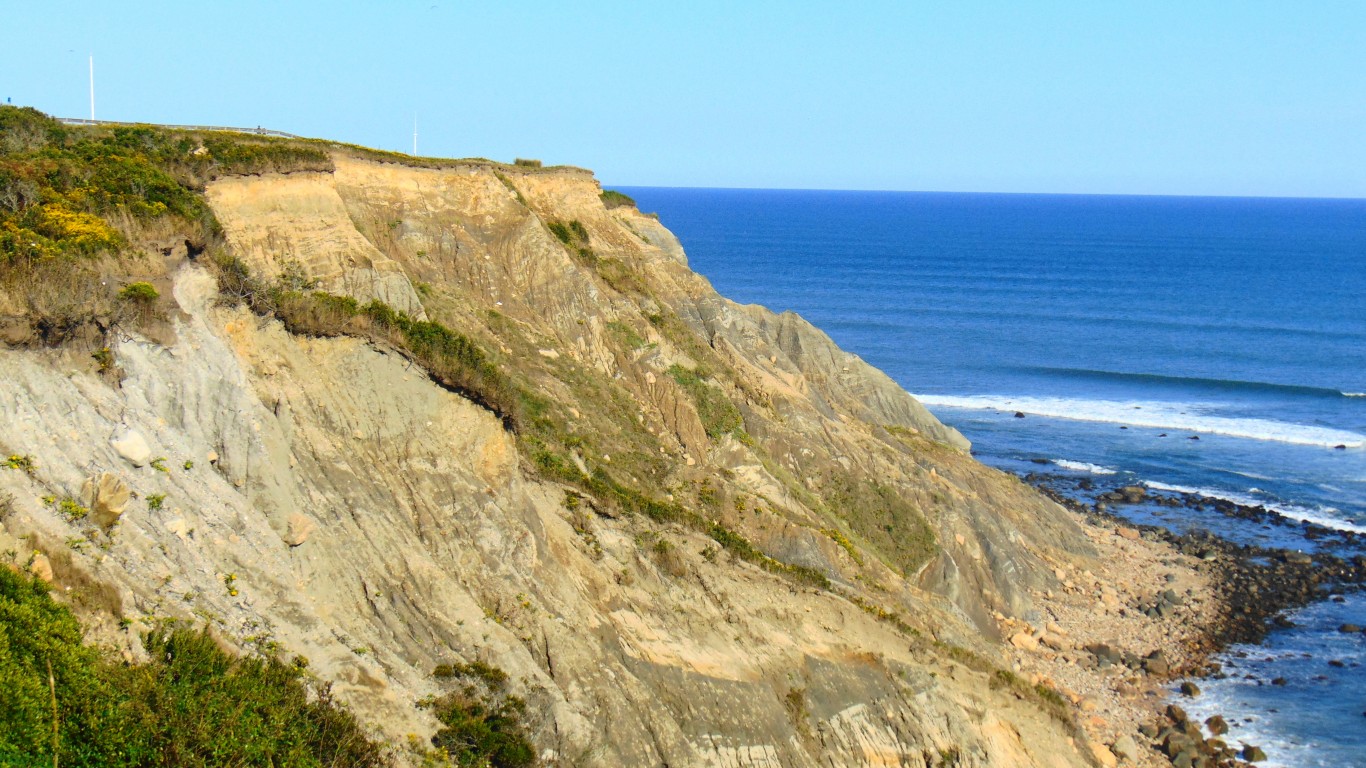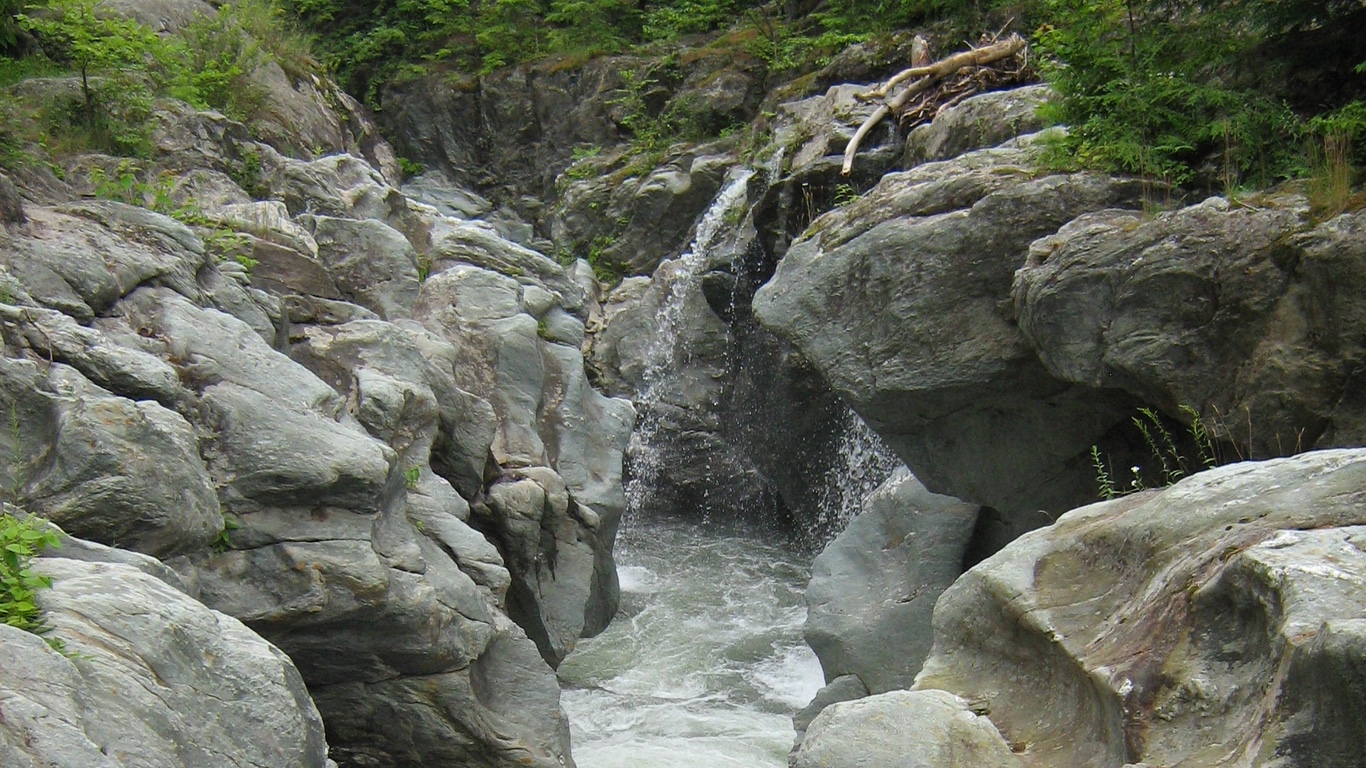
For nature lovers, a road trip to U.S. natural wonders could satisfy wanderlust while allowing social distancing.
After reviewing numerous travel guides and photography collections, 24/7 Tempo compiled a list of standout natural sights in each state. Though subjective, these diverse landscapes deserve recognition for their beauty and uniqueness.
Glacially-carved valleys, millennia-old river-etched canyons, and volcanic islands exemplify some of the country’s most stunning scenery. While not every state’s most popular attraction, these geologic formations showcase nature’s majesty. Places like Utah and Arizona possess abundant awe-inspiring sights beyond just one.
Though nature impresses, human engineering has also produced gravity-defying, breathtaking marvels across America worth experiencing. Here are the most photographed structures in the world.
Click here to see the most beautiful natural wonder in every state
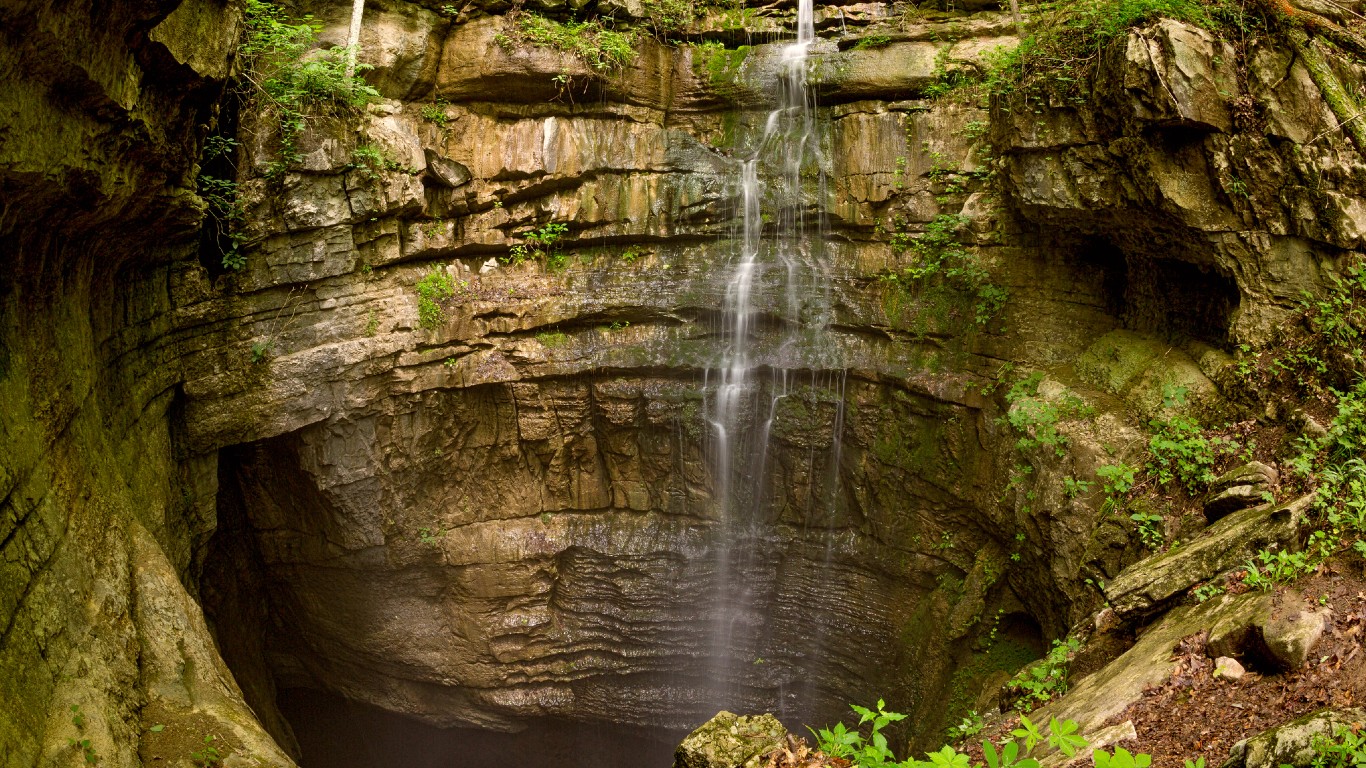
Alabama: Stephens Gap
Among the most popular attractions in the state, especially for hikers and photographers, is Stephens Gap, a cave with a 143-foot pit. The cave is located in Woodville, in the Lake Guntersville Area of the North Alabama Region.
[in-text-ad]
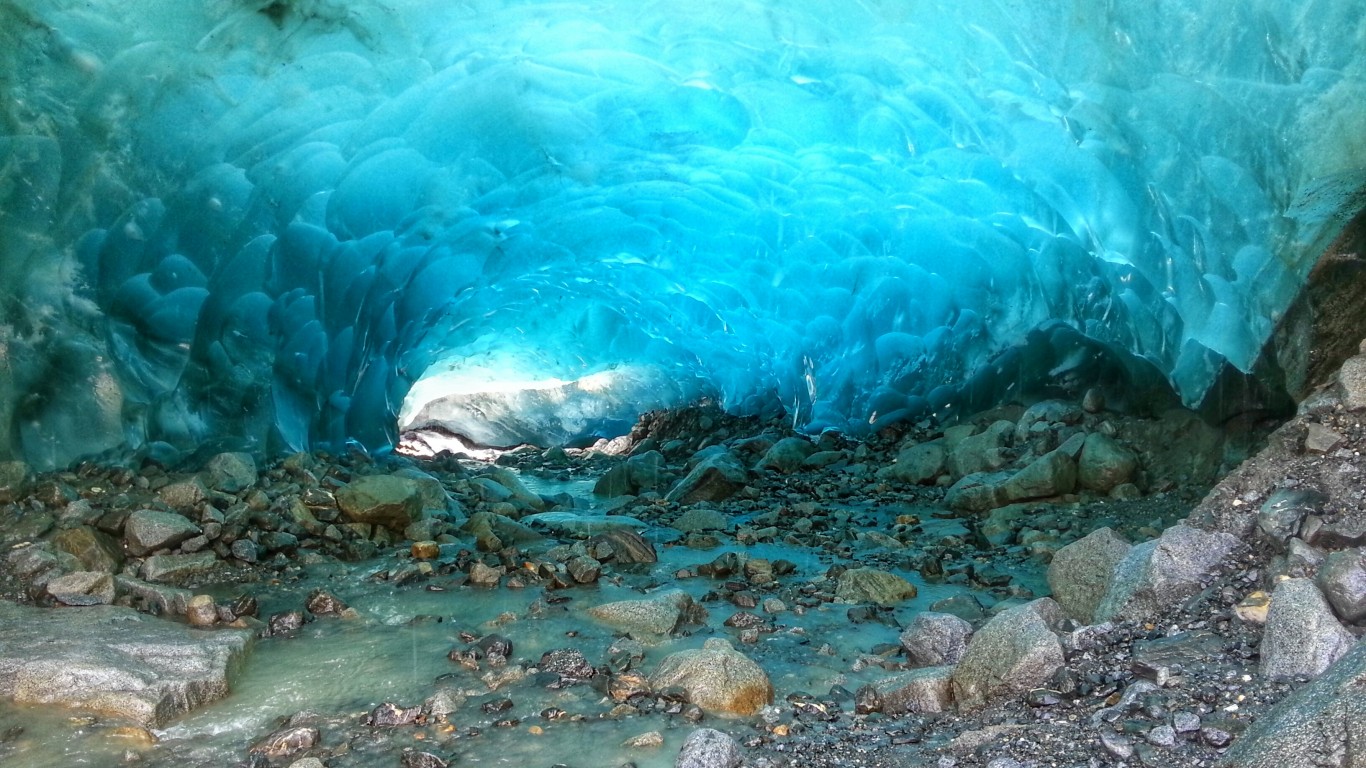
Alaska: Mendenhall Ice Caves
Inside the 12-mile-long Mendenhall glacier is a network of ever-changing ice caves created by the melting of the glacier. Visitors can only access the caves by first kayaking to the glacier, then climbing over it to reach the opening.
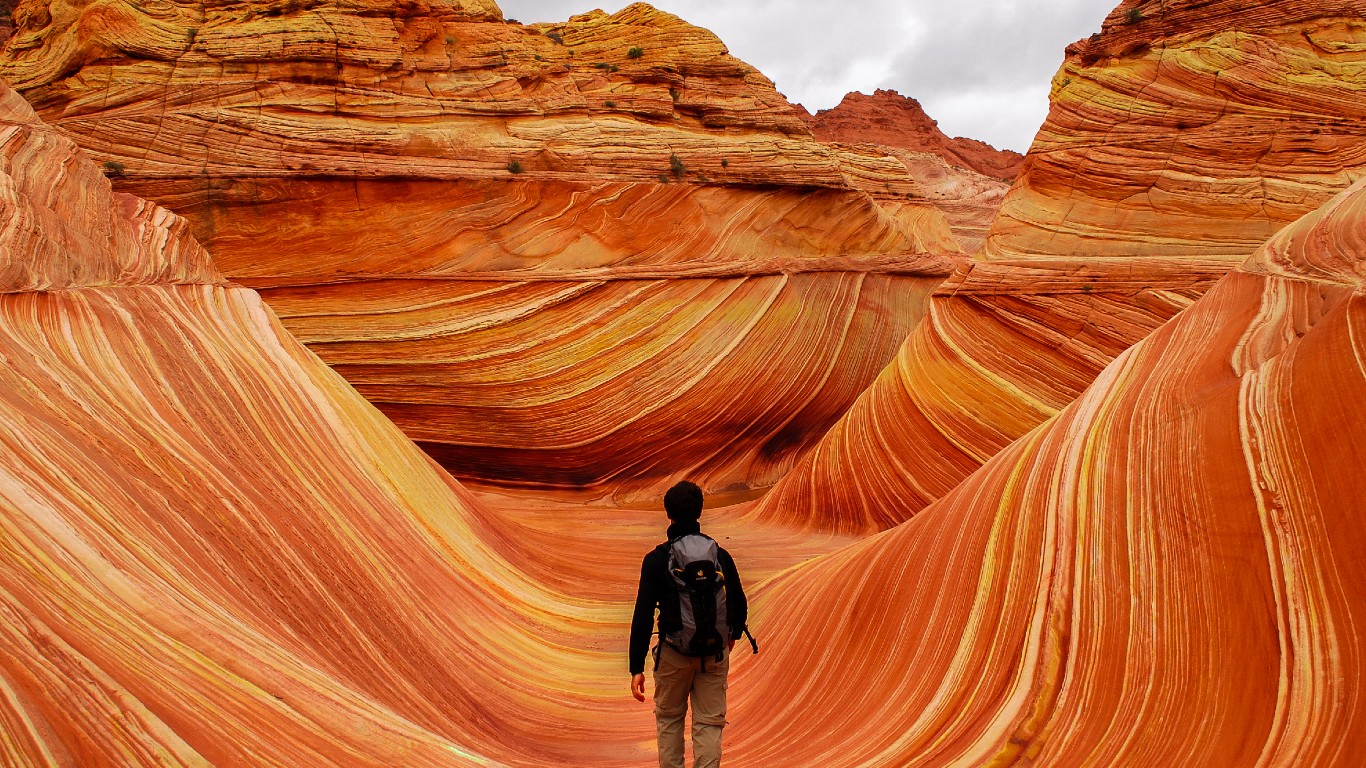
Arizona: The Wave
The Wave, a sandstone rock formation located in the Coyote Buttes North area on the Utah Arizona border, is one of the most photographed sites in the country. Photos of the Wave almost always looks photoshopped, even though it is not. Getting to the Wave requires a 3-mile hike and a permit.

Arkansas: Whitaker Point
The Whitaker Point offers beautiful views of the Buffalo National River, and the 2.9-mile trail that gets you to the Point, located deep inside the Ozark National Forest, is worth the trip. It’s located near Pettigrew, open year-round, and is easy to hike.
[in-text-ad-2]

California: Lake Tahoe
The largest alpine lake in the United States, Lake Tahoe covers 191 square miles on the border of California and Nevada. It sits over 6,000 feet above sea level, surrounded by mountains. The waters are famous for appearing different shades of blue, turquoise, indigo, and purple depending on the location and weather.
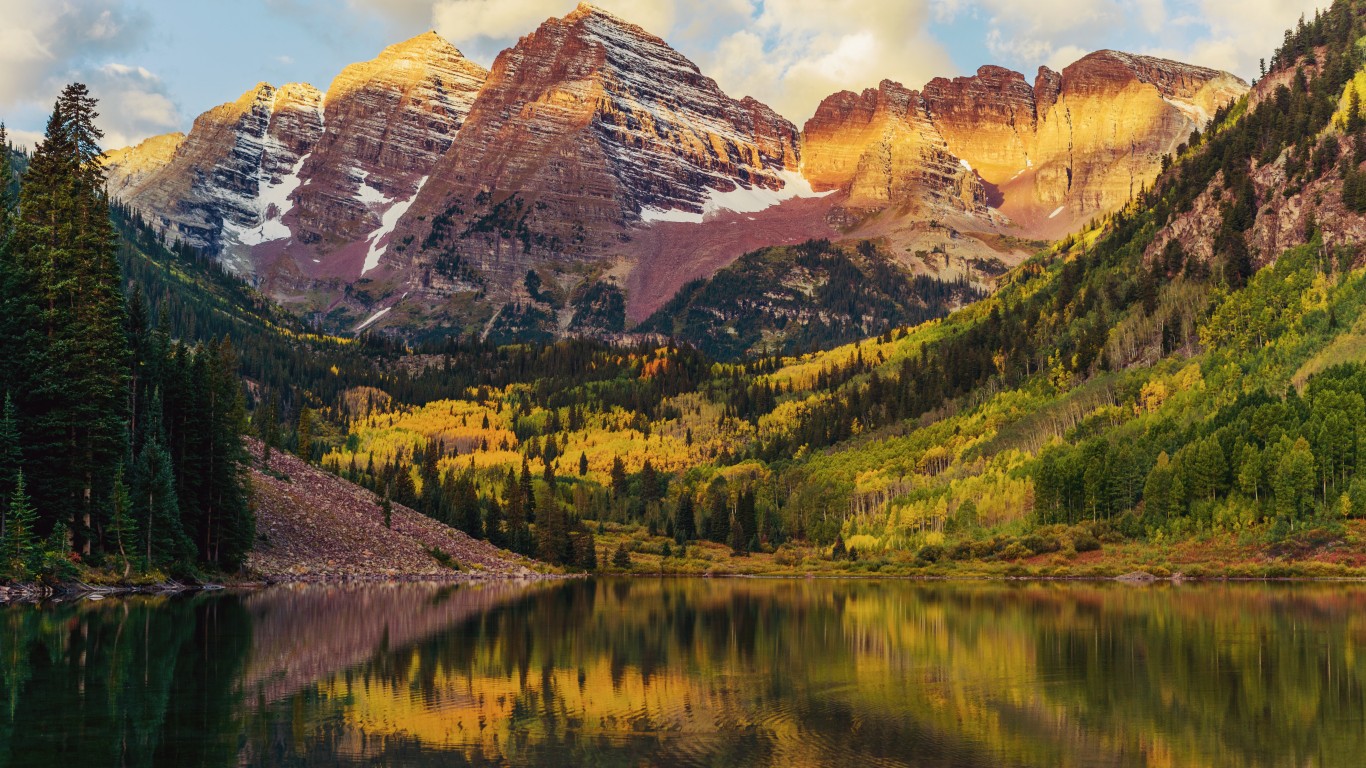
Colorado: Maroon Bells
North and South Maroon Peaks tower over Maroon Lake in Aspen, reflecting their red hue off the water on sunny days. The Bells, along with their neighbor Pyramid Peak, are made of red mudstone and are known as the most photographed mountains in the Rockies.
[in-text-ad]
Connecticut: Kent Falls
A series of falls that spans a quarter mile and drops 250 feet total, Kent Falls are one of Connecticut’s most popular natural attractions. They are located in Kent Falls State Park, which offers picnic tables, a paved path to the upper falls, and a handicap accessible viewing area at the lower falls.
Delaware: Great Cypress Swamp
The Great Cypress Swamp covers 50 square miles at the headwaters of the Pocomoke River and consists of seasonally flooded forests made up of bald cypress, white cedar, pines, and various hardwoods. It’s the northernmost bald cypress grove in the country and an important habitat for several at-risk bird species.

Florida: Juniper Springs
Juniper Springs is a series of clear, bubbling freshwater springs found in the sub-tropical Ocala National Forest north of Orlando. Contained in a recreation area that allows swimming and snorkeling, the springs are surrounded by palm and oak trees and are home to alligators, river otters, and eels.
[in-text-ad-2]
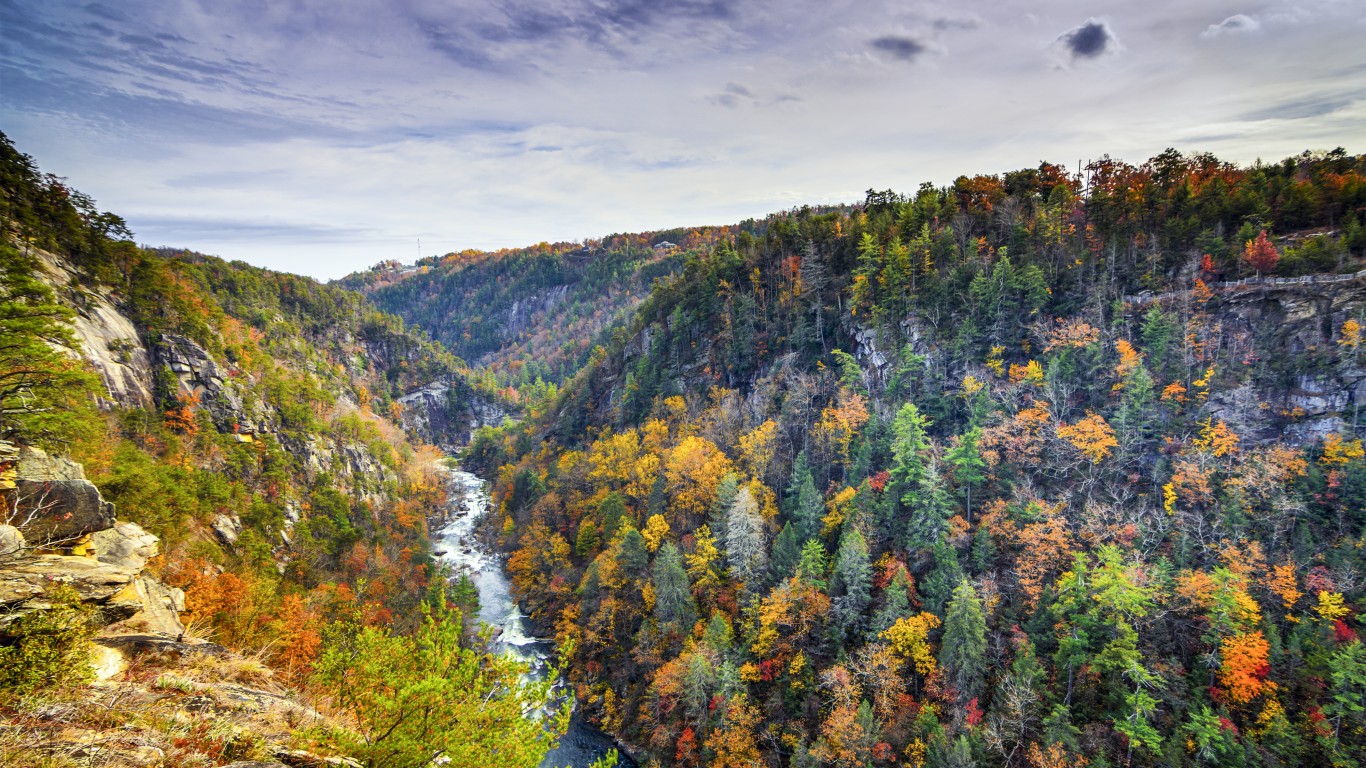
Georgia: Tallulah Gorge
The gorge is about 2 miles long and almost 1,000 feet deep. A suspension bridge about 80 feet above the gorge offers stunning views of the area’s waterfalls and landscapes. Though very popular, the Tallulah Gorge’s trail is strenuous. A free permit is required to hike it.

Hawaii: Na Pali Coast
Once home to ancient Hawaiian communities, the Na Pali coast is characterized by sharp peaks and mountains that fall steeply to the ocean, forming deep valleys, caves, and cliffs. The only ways to see the coast are by helicopter, boat, or hiking a gruelling 11-mile trail over the steep ridges.
[in-text-ad]
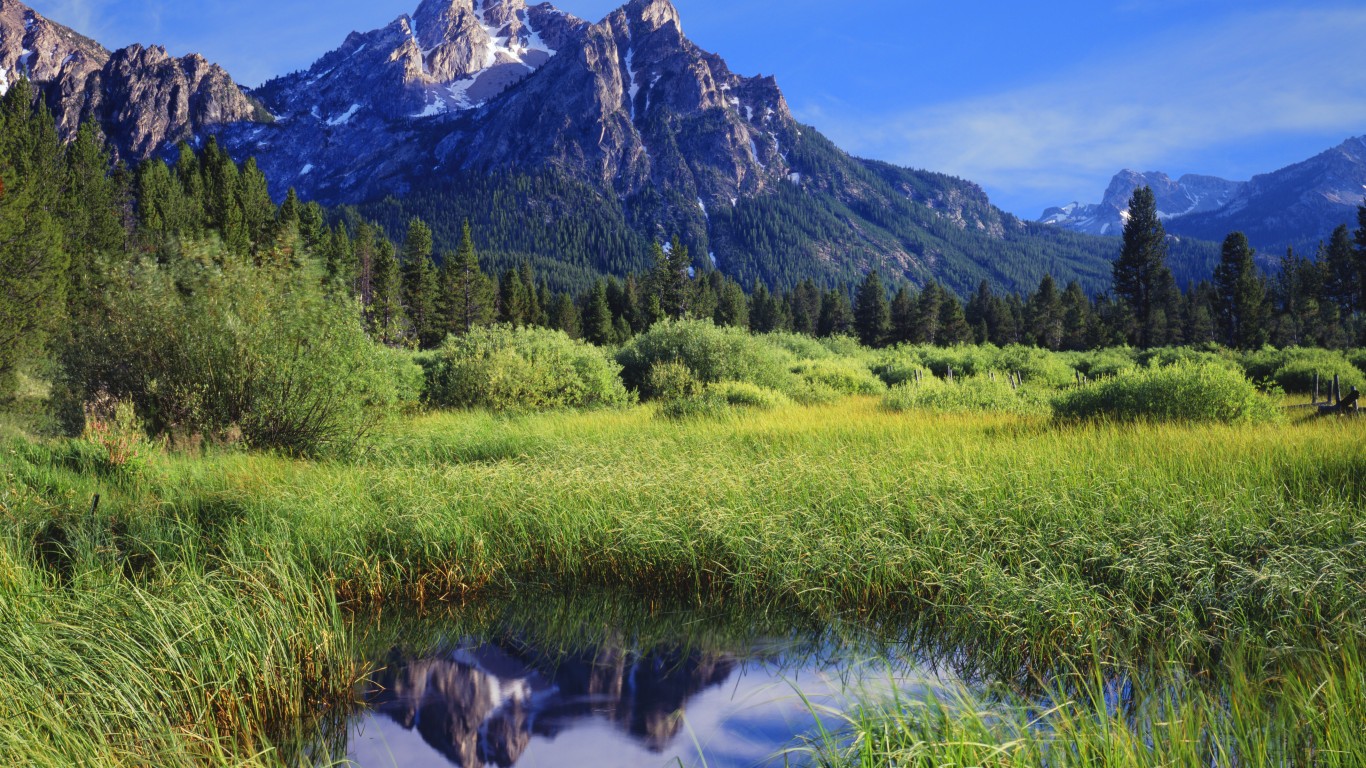
Idaho: Sawtooth National Forest
The Sawtooth National Forest is home to over 300 alpine lakes amongst dozens of 10,000 foot snow-capped peaks, and over 700 miles of trails. While Sawtooth is a haven for all types of outdoor sports and activities, those who wish to see it firsthand from the comfort of a vehicle can drive the Ponderosa Pine Scenic Byway.
Illinois: Garden of the Gods
These 300-million-year-old sandstone formations in the Shawnee National Forest are accessible by a quarter-mile observation trail and are one of the most photographed locations in Illinois.
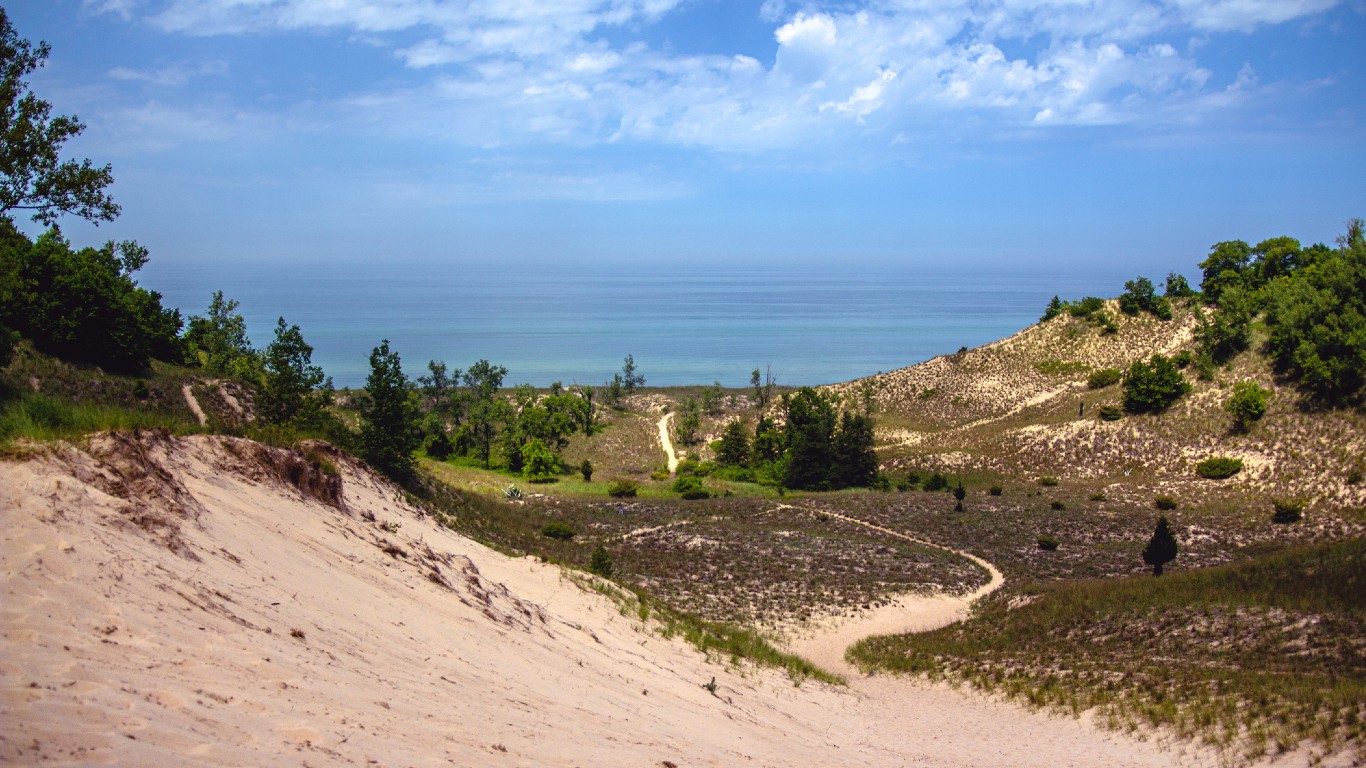
Indiana: Indiana Dunes
Spanning 15 miles of coastline on the southern shore of Lake Michigan, Indian Dunes National Park has over 50 miles of dune trials, as well as beaches, wetlands, rivers, forests, and prairies.
[in-text-ad-2]

Iowa: Upper Iowa River
The Upper Iowa River traverses part of what is known as the Driftless Area, a region untouched by glaciers during the last ice age, which has left the land with intact ancient topography. High bluffs surround this stretch of water, which is a popular area for kayaking and canoeing.
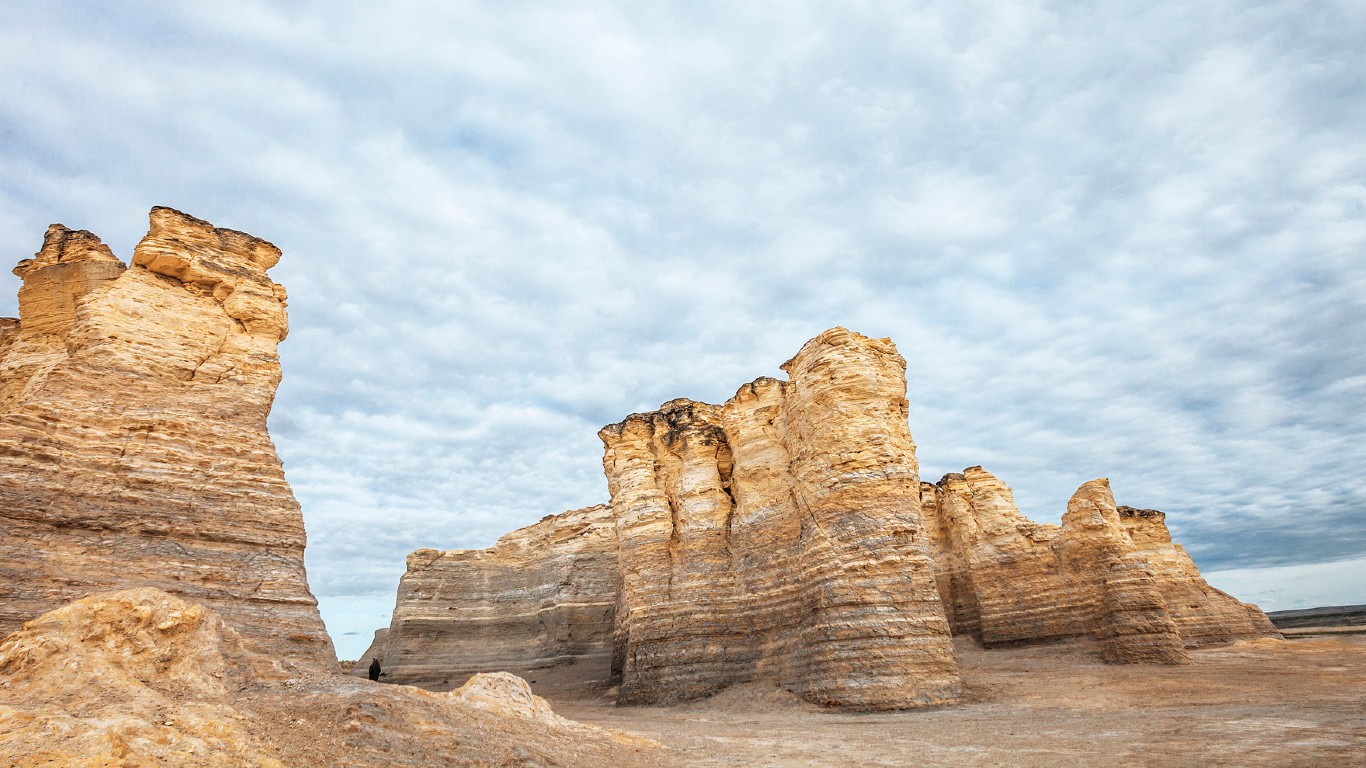
Kansas: Monument Rocks
The Monument Rocks, also known as Chalk Pyramids, are one of the Eight Wonders of Kansas. The site is located near U.S.-83 in western Kansas. Though they are on private land, the 70-foot tall rock formations, formed around 80 million years ago, are open to the public during the day.
[in-text-ad]
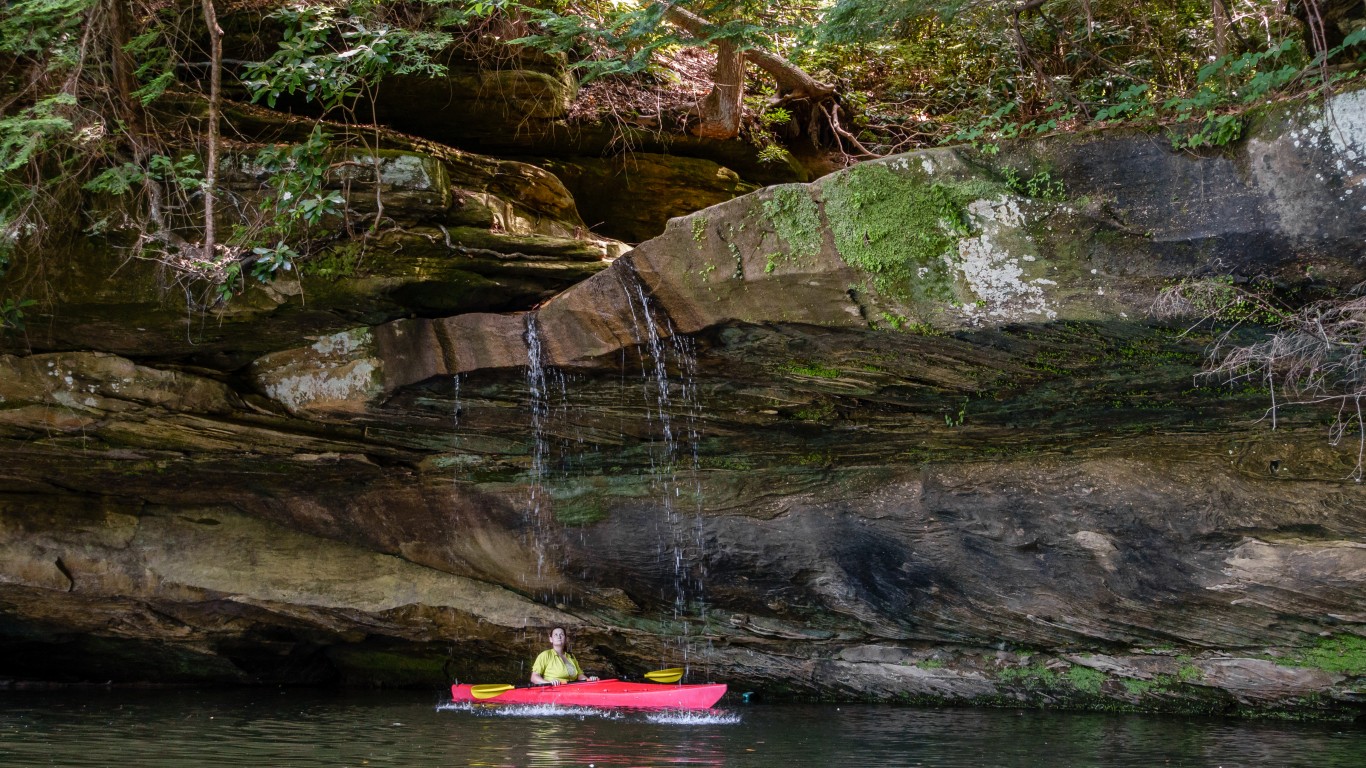
Kentucky: Grayson Lake
Grayson Lake in Olive Hill is surrounded by sandstone bluffs covered in dense forest. Part of a 1,500 acre state park, the lake is open to canoeing and kayaking, and is particularly beautiful after rain, when waterfalls appear along the rock formations, some of which can only be viewed by boat.

Louisiana: Atchafalaya Basin
The largest swamp in the United States, the Atchafalaya River Basin covers nearly a million acres. Composed of marshes, iconic moss-draped cypress groves, lakes, and bottomland hardwood forest, the area is a crucial wildlife habitat and home to the largest population of nesting bald eagles in the region.
Maine: Cutler Coast
The Cutler Coast Public Reserve lies close to the Canadian border outside of Cutler, Maine. Hiking trails ranging from 2.8 to 9.2 miles round-trip offer access to the sheer cliffs and undeveloped coves often referred to as the Bold Coast.
[in-text-ad-2]

Maryland: Great Falls
Great Falls Park in Maryland offers multiple overlooks of the many rapids and waterfalls on the Potomac River outside of Washington DC. Though there are numerous hiking trails in the park, the Billy Goat Trail offers some of the best closeup views of the falls.
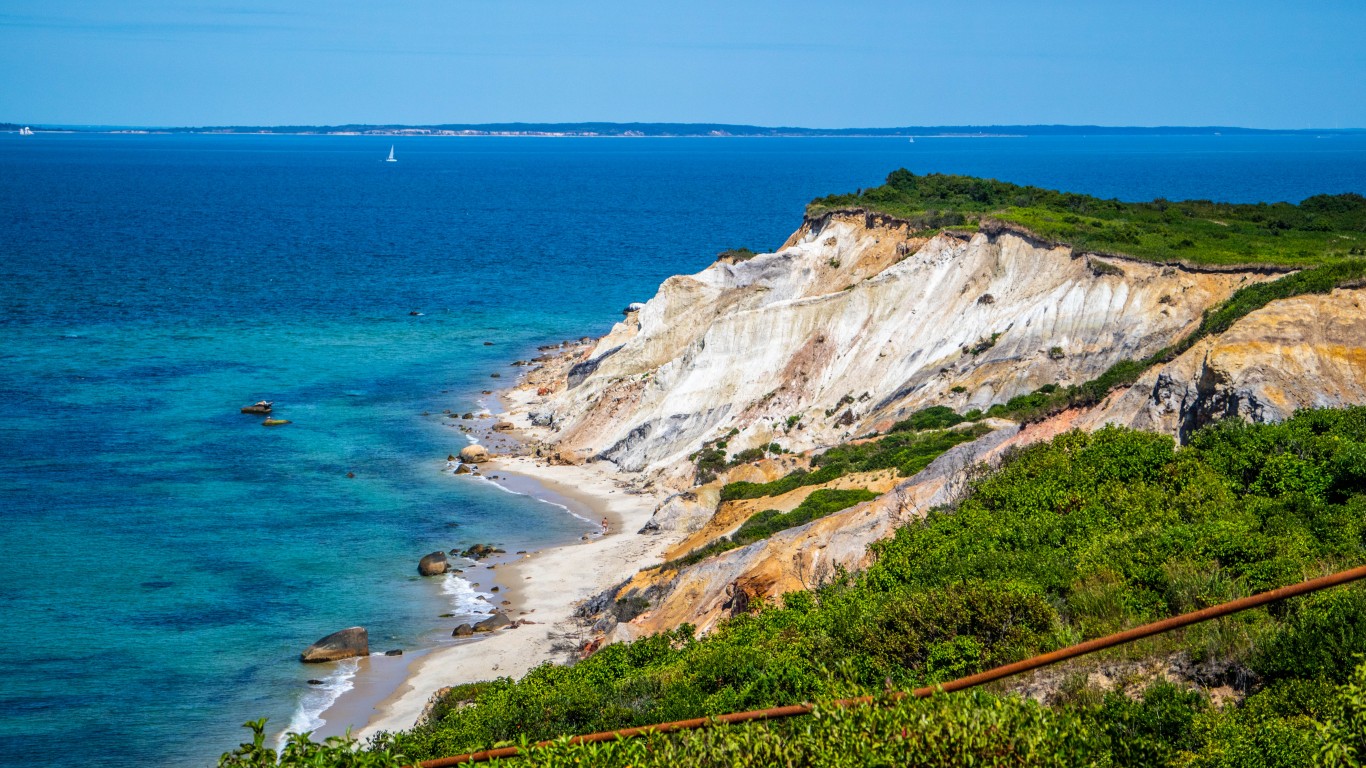
Massachusetts: Gay Head Cliffs
These colorful hundred-foot clay cliffs on the island of Martha’s Vineyard are constantly eroding, which has led to the historic Gay Head Lighthouse being moved to save it from falling into the ocean.
[in-text-ad]
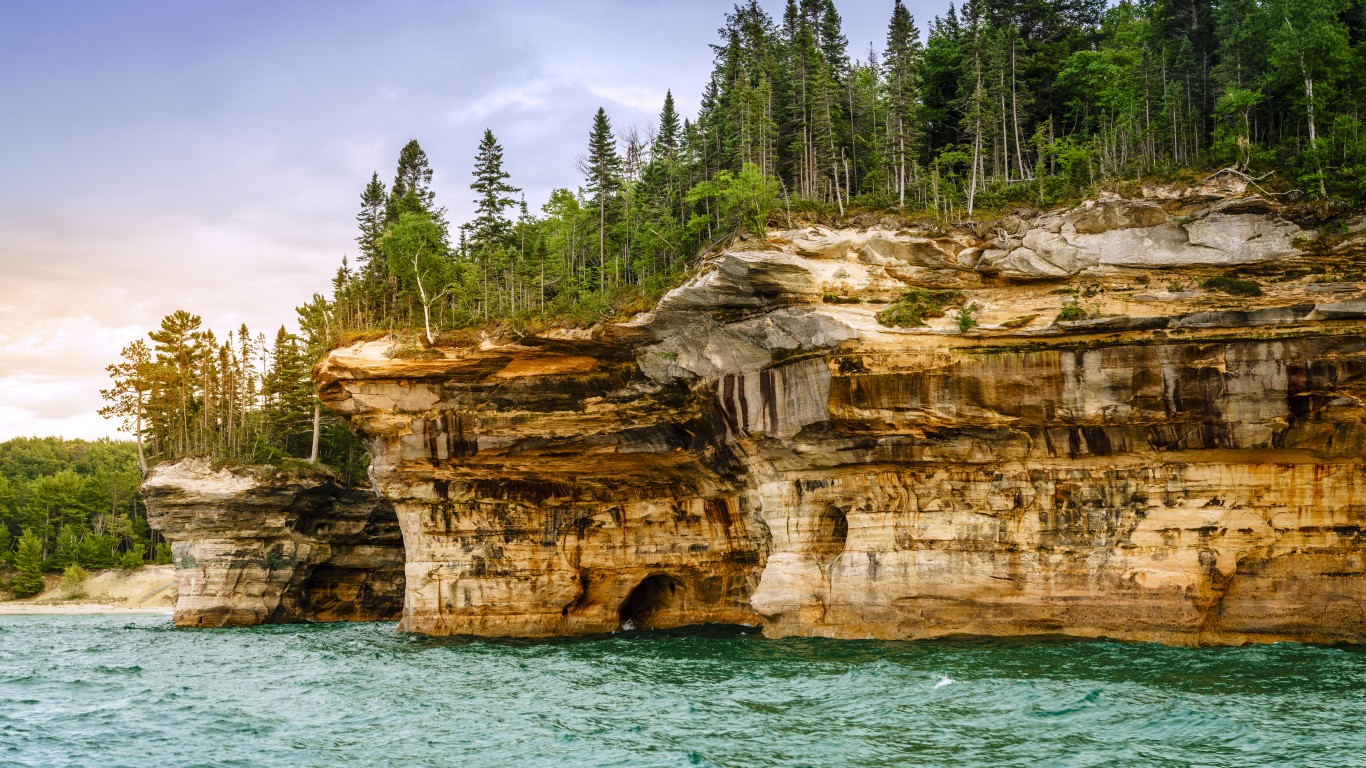
Michigan: Pictured Rocks
While there is no dearth of beauty along Michigan’s Great Lakes coastlines, the Pictured Rocks National Lakeshore offers a little bit of everything beautiful about the coast, including sand dunes, steep cliffs, beaches, forests, and inland lakes.

Minnesota: Boundary Waters Canoe Area Wilderness
The area, located in the Superior National Forest in northeastern Minnesota, has more than 2,000 campsites, 12 hiking trails, and over 1,200 miles of canoe routes. Permits are required for day use as well as overnight trips.
Missouri: Onondaga Cave State Park
Designated a National Natural Landmark due to the quality of its formations, Onondaga Cave features a wide variety of pristine cave structures and an underground river deeply entrenched in a canyon.
[in-text-ad-2]
Mississippi: Red Bluff
Red Bluff Canyon outside of Foxworth was formed by the erosion of sand, soil, and red clay by the Pearl River. About 200 feet deep at present, the canyon will continue to get deeper as the river continues to erode its banks.

Montana: Lake McDonald
The largest, longest, and deepest lake in Glacier National Park, Lake McDonald features a spectacular array of colorful stones on its shores and beneath its waters. The rocks were formed in different eras then broken apart by glaciers and deposited in the lake over the years by rivers.
[in-text-ad]

Nebraska: Toadstool Geologic Park
A surprising sight within the plains of Nebraska, Toadstool Geologic Park consists of oddly-shaped clay and sandstone formations within the bed of an ancient river that went dry about 26 million years ago. Fossils of sabre-tooth cats and prehistoric horses are visible among the eroded cliffs.
Nevada: Fly Ranch Geyser
This geyser near Black Rock Desert was created in 1964 when a geothermal energy company drilled a well to the 200-degree underground spring. The formation around the multiple spouts has been growing ever since due to mineral deposits from the water, and is covered in colorful algae.
New Hampshire: Franconia Notch Basin
Located in Franconia Notch State Park, the Basin is a 15-foot-deep, 30-foot-wide bowl carved into granite by a rushing waterfall. Henry David Thoreau called the Basin “perhaps the most remarkable curiosity of its kind in New England.”
[in-text-ad-2]

New Jersey: Island Beach State Park
The narrow Island Beach State Park, located between the Atlantic Ocean and the Barnegat Bay, is about 10 miles long. The 3,000 acres of land, shaped by storms and tides over thousands of years, is almost the same as when it was first described by Henry Hudson, an English explorer, in 1609.

New Mexico: White Sands
White Sands National Monument is the largest gypsum dune field in the world. Gypsum is rarely seen as sand, as it dissolves in water, but New Mexico’s dry climate has preserved the dunes. The pure white sand mounds stretch for 275 square miles near Alamogordo.
[in-text-ad]

New York: Niagara Falls
Niagara Falls are formed not by a river, but by Lake Erie draining into Lake Ontario. Niagara is an attraction that spans the border into Canada, and is made of three falls: Horseshoe, Bridal Veil, and American Falls. On the U.S. side, Niagara Falls State Park is the nation’s oldest state park.

North Carolina: Linville Falls
Linville Falls is a three-tiered waterfall that plummets 90 feet into the 12-mile-long Linville Gorge off the Blue Ridge Parkway. Multiple trails between one and two miles round trip provide overlooks to the falls.
North Dakota: Painted Canyon
Located in the South Unit of Theodore Roosevelt National Park, Painted Canyon is one of the most photographed areas in North Dakota. Painted Canyon Overlook affords views of the Canyon, and a one-mile walking trail dips down below the rim to offer views of the unique strata.
[in-text-ad-2]
Ohio: Hocking Hills Rock House
A tunnel-like cave situated high up on a 150-foot cliff, the Rock House at Hocking Hills State Park is a 200-foot-long, 25-foot-high tunnel caused by water erosion. Seven window-like holes and massive sandstone columns helped give the cave its name.

Oklahoma: Gloss Mountains
The Gloss Mountains are also called the Glass Mountains, due to their reflective selenite content that mimics glass, especially when the sun hits at just the right angle. Not actually mountains, they are a series of deep red buttes and mesas that rise 150 to 200 feet.
[in-text-ad]

Oregon: Thor’s Well
Thor’s Well is one of the most popular attractions in the state. The sinkhole is repeatedly filled by the waves until the water sprays out from the top. The water then rolls back into the hole … until it fills up the bowl again. Thor’s Well is located in the Cape Perpetua Scenic Area, near the Yachats.

Pennsylvania: Cherry Springs State Park
Surrounded by the 262,000-acre Susquehannock State Forest, Cherry Springs State Park is a remote location that is perfect for stargazing. Because the park has some of the darkest skies in the Eastern half of the country, it offers uniquely clear views of the Milky Way and other astronomical phenomena.
Rhode Island: Mohegan Bluffs
The Mohegan Bluffs on Block Island are a series of 200-foot-high coastal cliffs that span over two miles. A beach at the base of the bluffs is accessible by a steep trail from the top, and the overlooks offers views reaching as far as Montauk on Long Island.
[in-text-ad-2]

South Carolina: Boneyard Beach
Boneyard Beach is an eerie stretch of coast on Bull Island where trees that formerly grew on the shore have been overtaken by the ocean. The saltwater eventually turned them white and grey, and many have toppled over and lie in the waves.

South Dakota: Badlands
Aside from being a diverse display of geologic deposits, the Badlands are also one of the most prolific fossil beds on earth. A 40-mile scenic byway through Badlands National Park brings visitors up close to the colorful strata of the rock formations.
[in-text-ad]

Tennessee: Fall Creek Falls
One of the tallest single-drop waterfalls east of the Mississippi River, Fall Creek Falls is 256 feet high. A short walk from the parking lot leads to an overlook of the falls, and a steep trail leads to the base of the falls.
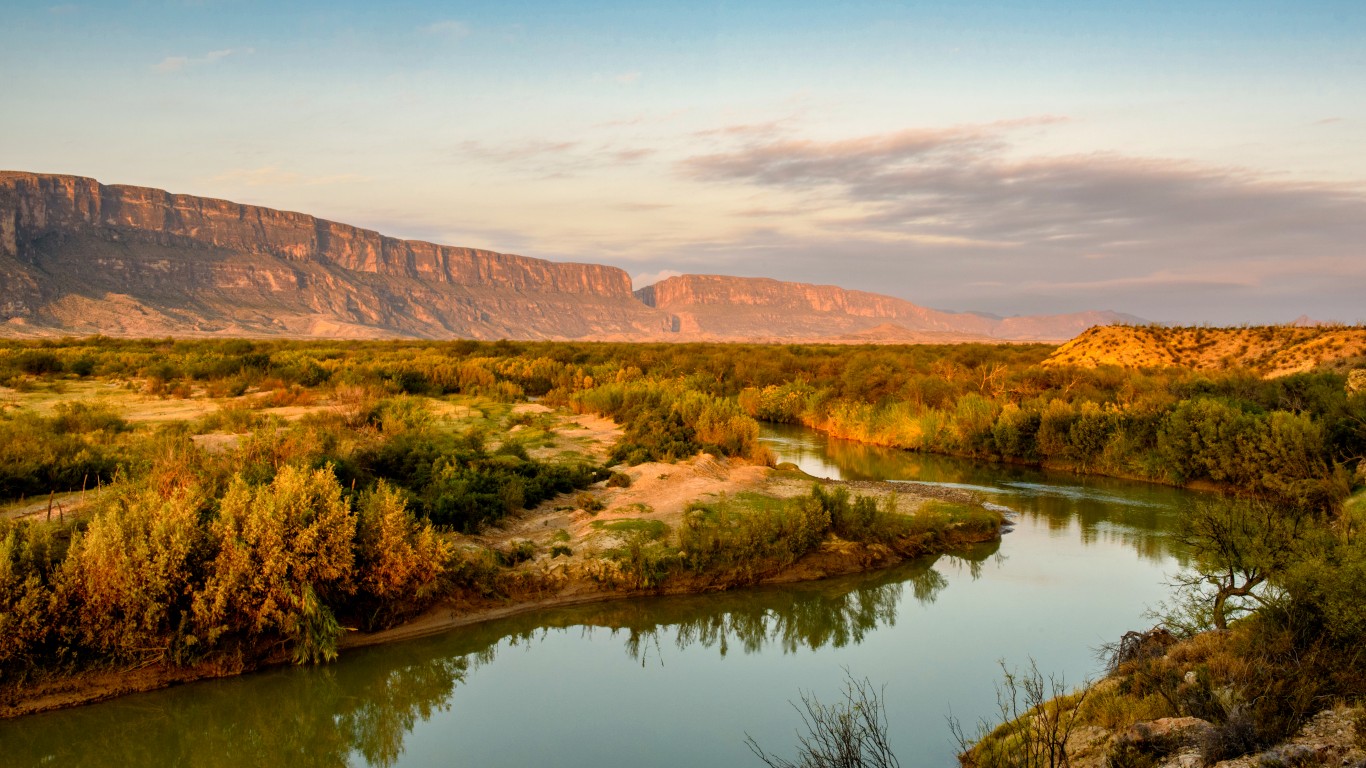
Texas: Big Bend National Park
Big Bend National Park abuts the Rio Grande River along the Mexican border. It contains the Chisos mountains and miles of limestone canyons carved into the desert by the river.
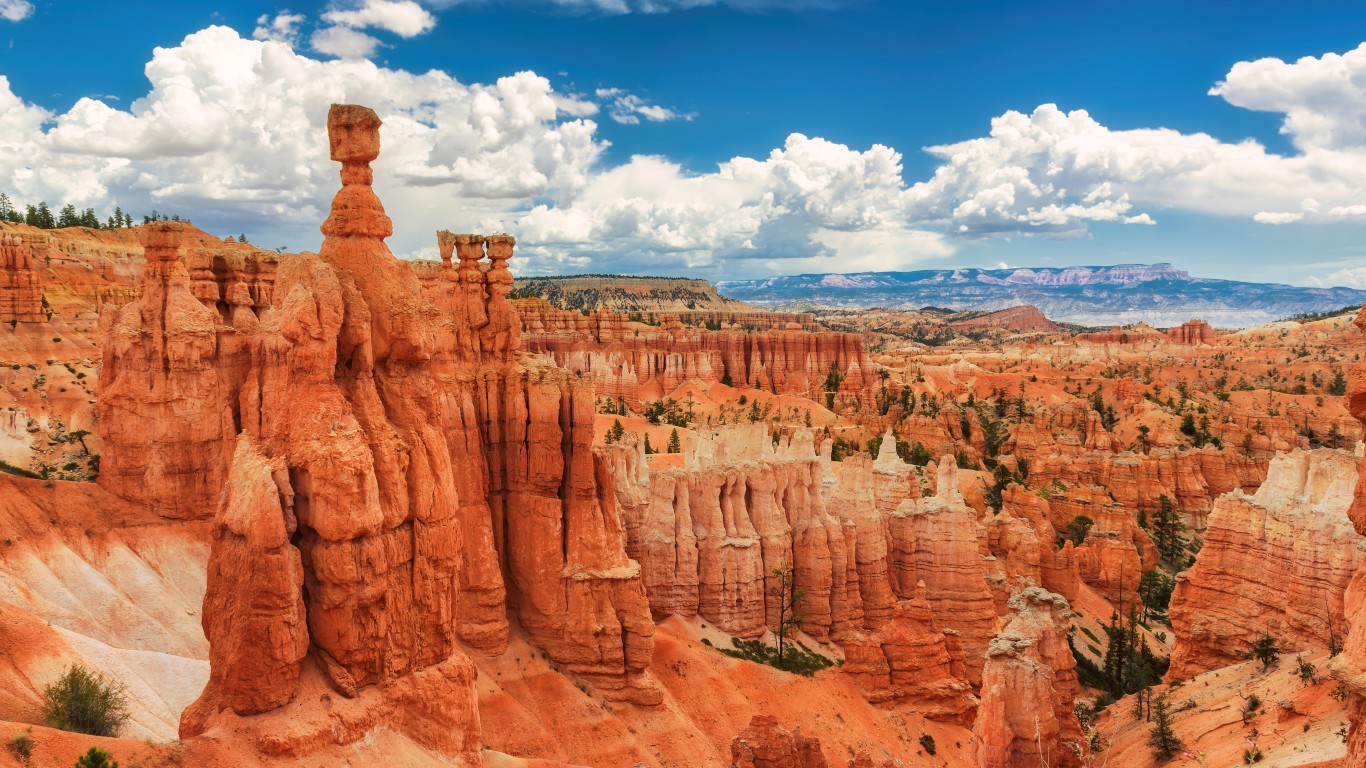
Utah: Bryce Canyon
Eroded by wind and water over millions of years, the thousand-foot limestone and sandstone columns at Bryce Canyon are striped with orange, pink, red, and white layers. Rather than being an actual canyon, the odd-shaped spires are a geologic formation called a hoodoo.
[in-text-ad-2]
Vermont: Huntington Gorge
A dangerous chasm that has claimed dozens of lives, the Huntington Gorge is a series of cascades and waterfalls in a narrow rock slot in Richmond. While swimming in the gorge is not recommended, areas further downriver offer safe trails to the water’s edge and countless swimming holes.
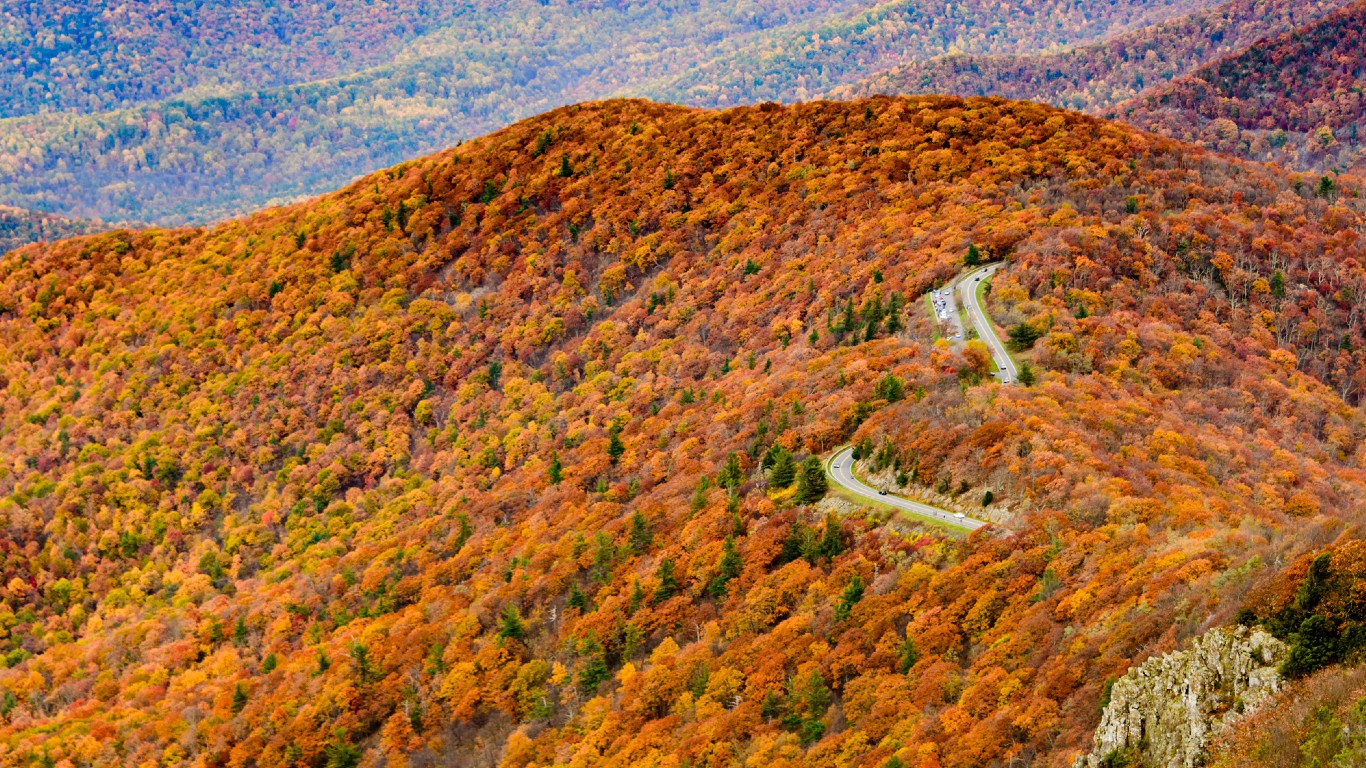
Virginia: Skyline Drive
This iconic road, the only public one in Shenandoah National Park, runs for 105 miles along the crest of the Blue Ridge Mountains. Though the drive should take you about three hours, realistically it will take you much longer because you will want to stop and take pictures at many of the road’s 70 overlooks and wildlife sightings.
[in-text-ad]

Washington: Hoh Rainforest
This temperate rainforest in Olympic National Park receives an average of 12 feet of rain a year, and is one of the oldest living ecosystems on the planet. Multiple hiking trails bring visitors through the moss- and fern-covered trees, which are largely sitka spruce and western hemlock.
West Virginia: Cranberry Glades
The acidic soil of these boreal bogs in the Allegheny Mountains is home to many plants that usually live at higher altitudes, including carnivorous pitcher plants, cranberries, skunk cabbage, and sphagnum moss.
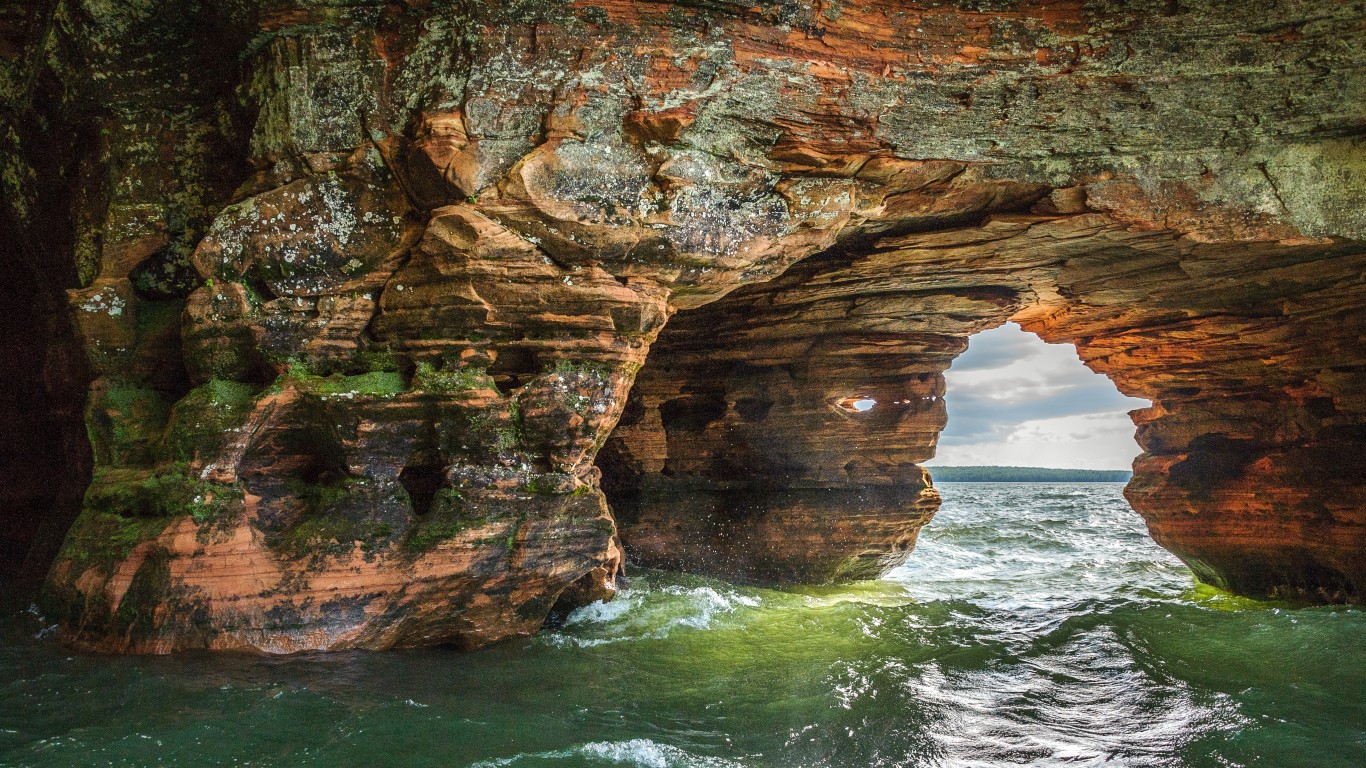
Wisconsin: Apostle Islands
A group of about 20 islands in Lake Superior, the Apostle Islands are covered in pits and caverns, old growth forest, and waterfalls. They are accessible by boat during the warmer months, but if the lake freezes deep enough to provide safe passage in the winter, visitors can walk to some of the islands, which are covered in beautiful ice formations.
[in-text-ad-2]
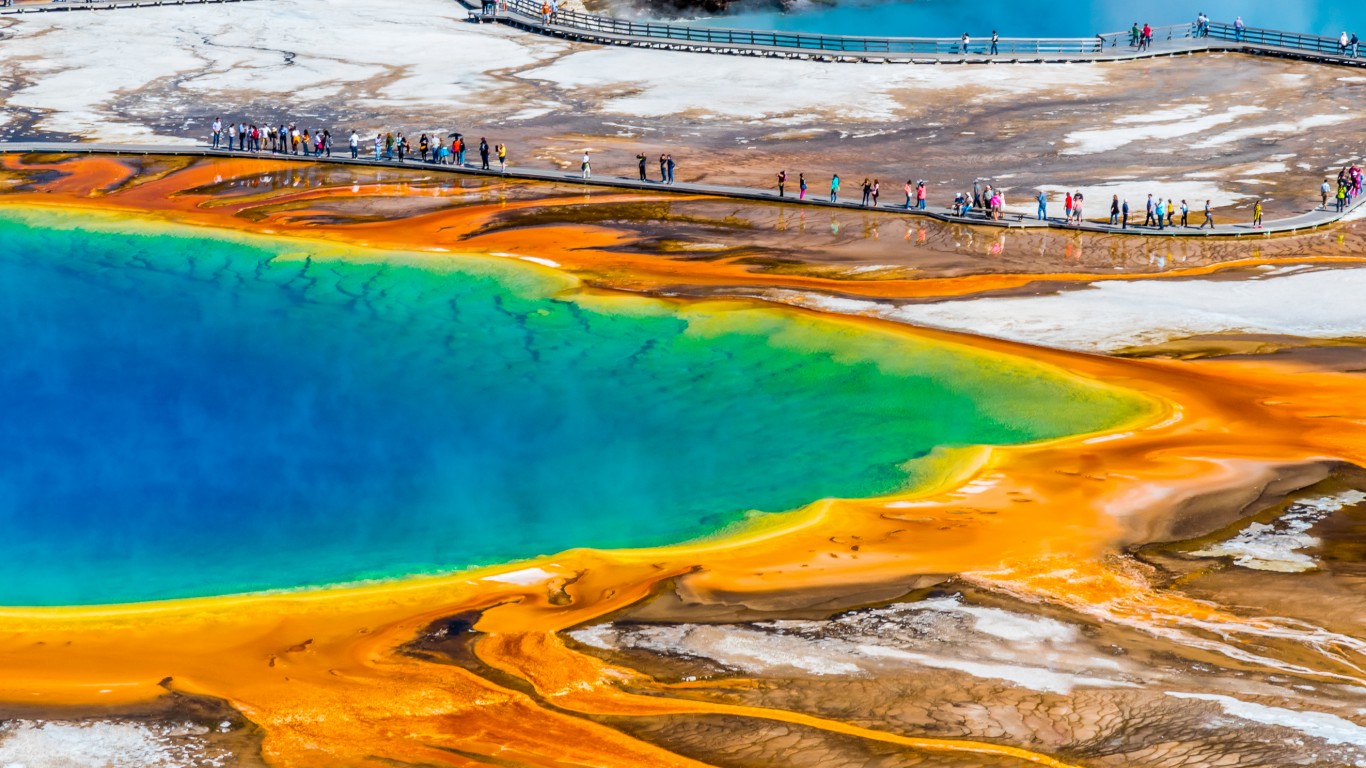
Wyoming: Grand Prismatic Spring
The Grand Prismatic Spring is the largest hot spring in Yellowstone. Its color rings are due to bacteria that inhabit different temperature zones in the water, which is scalding in the center and cooler at the edges of the pool.
Travel Cards Are Getting Too Good To Ignore
Credit card companies are pulling out all the stops, with the issuers are offering insane travel rewards and perks.
We’re talking huge sign-up bonuses, points on every purchase, and benefits like lounge access, travel credits, and free hotel nights. For travelers, these rewards can add up to thousands of dollars in flights, upgrades, and luxury experiences every year.
It’s like getting paid to travel — and it’s available to qualified borrowers who know where to look.
We’ve rounded up some of the best travel credit cards on the market. Click here to see the list. Don’t miss these offers — they won’t be this good forever.
Thank you for reading! Have some feedback for us?
Contact the 24/7 Wall St. editorial team.
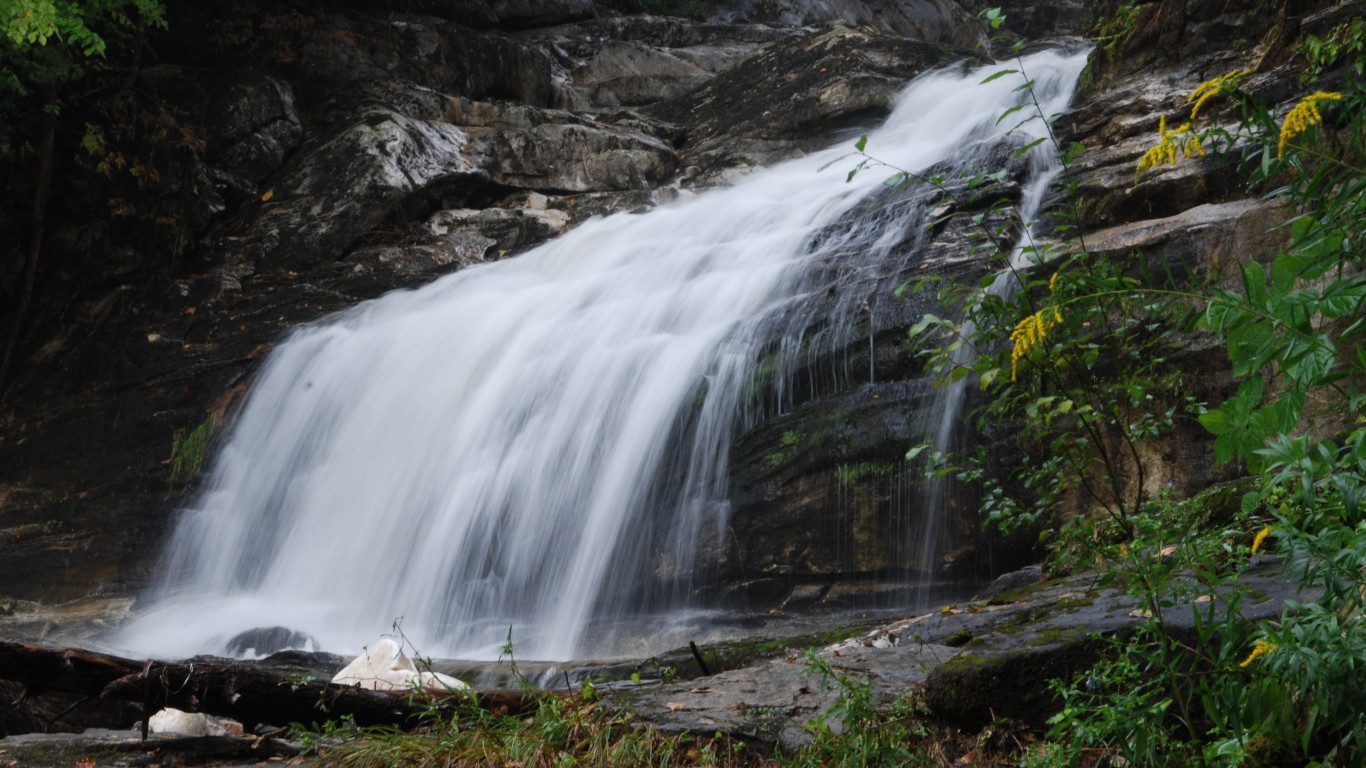
 24/7 Wall St.
24/7 Wall St.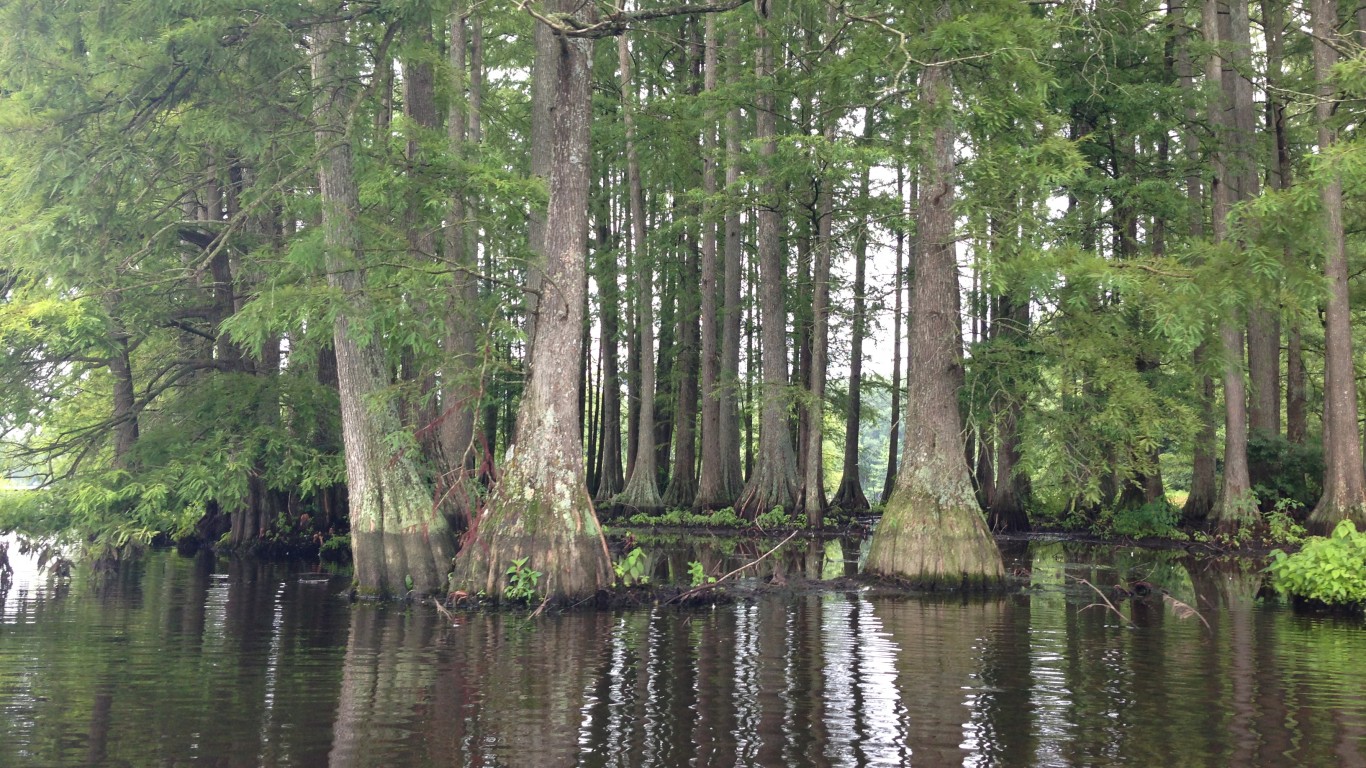
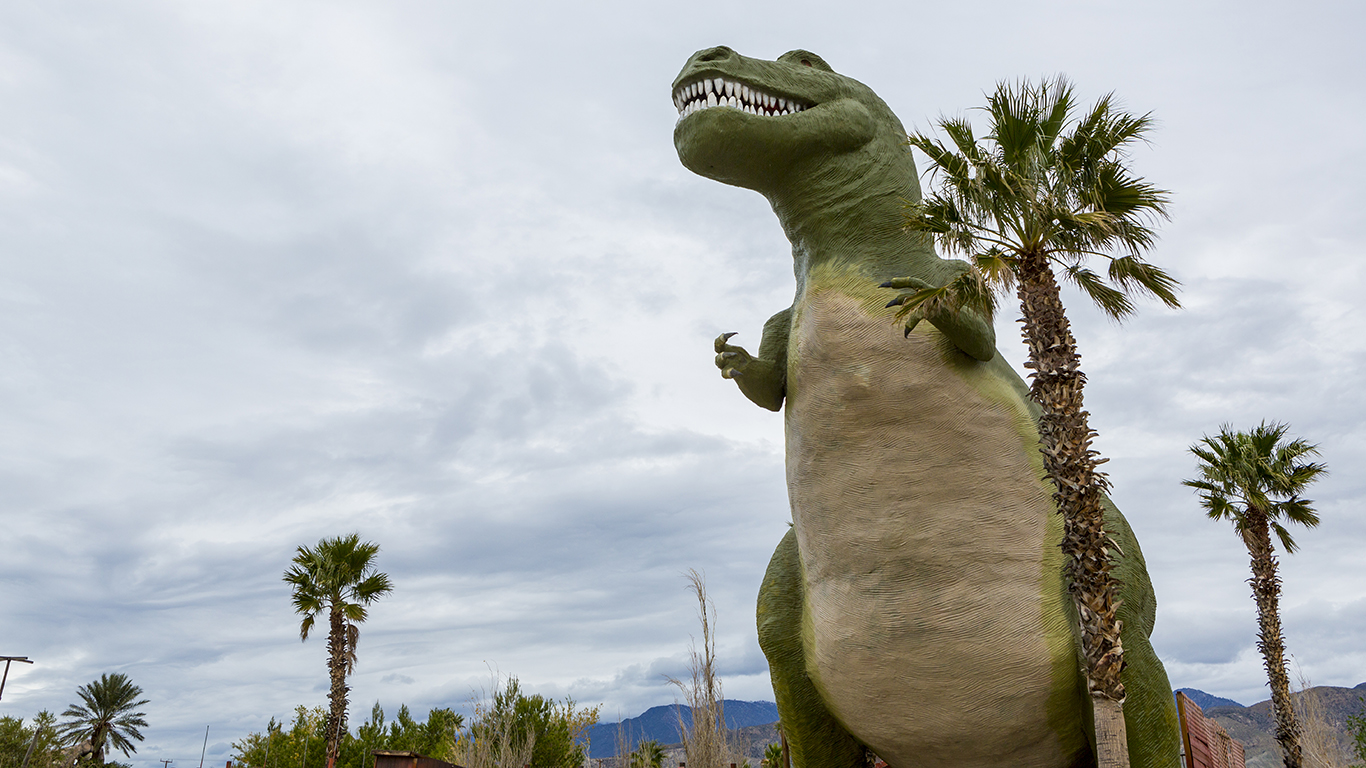 24/7 Wall St.
24/7 Wall St.
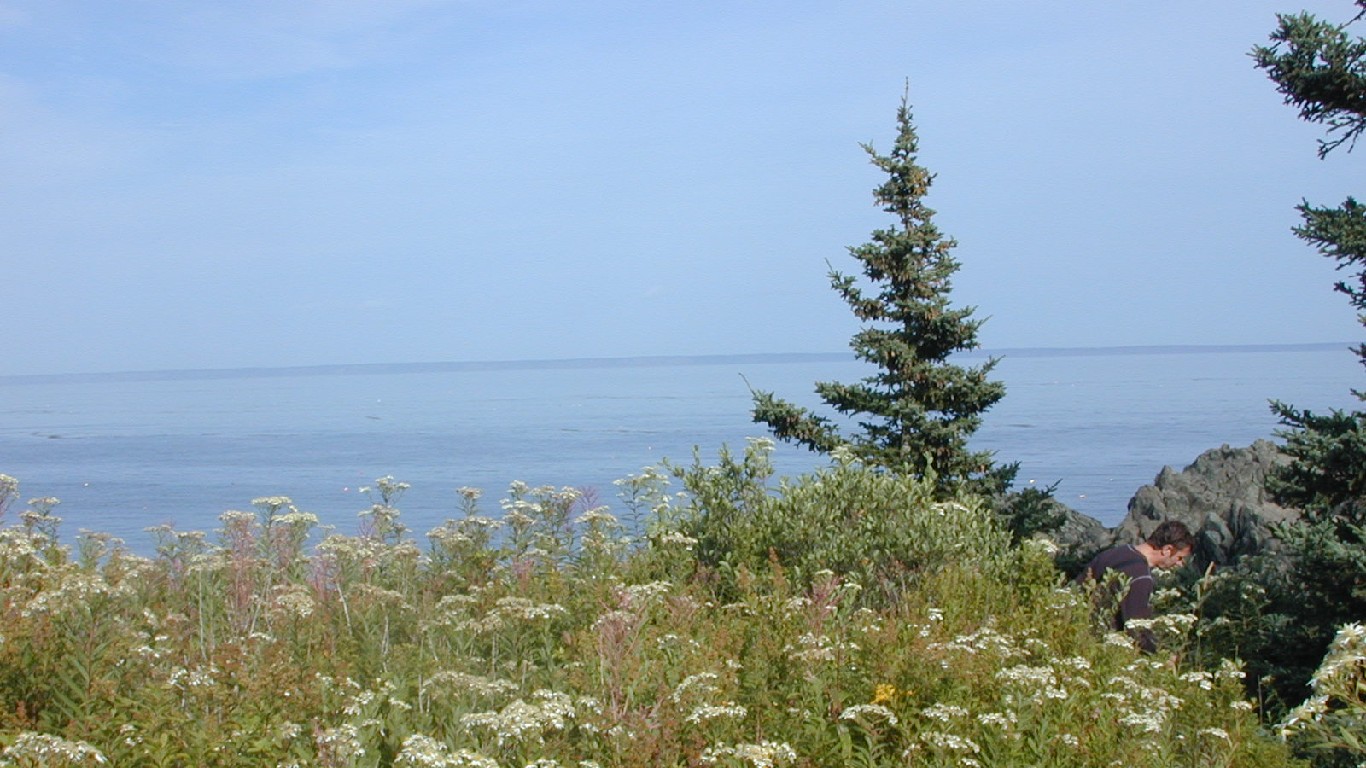

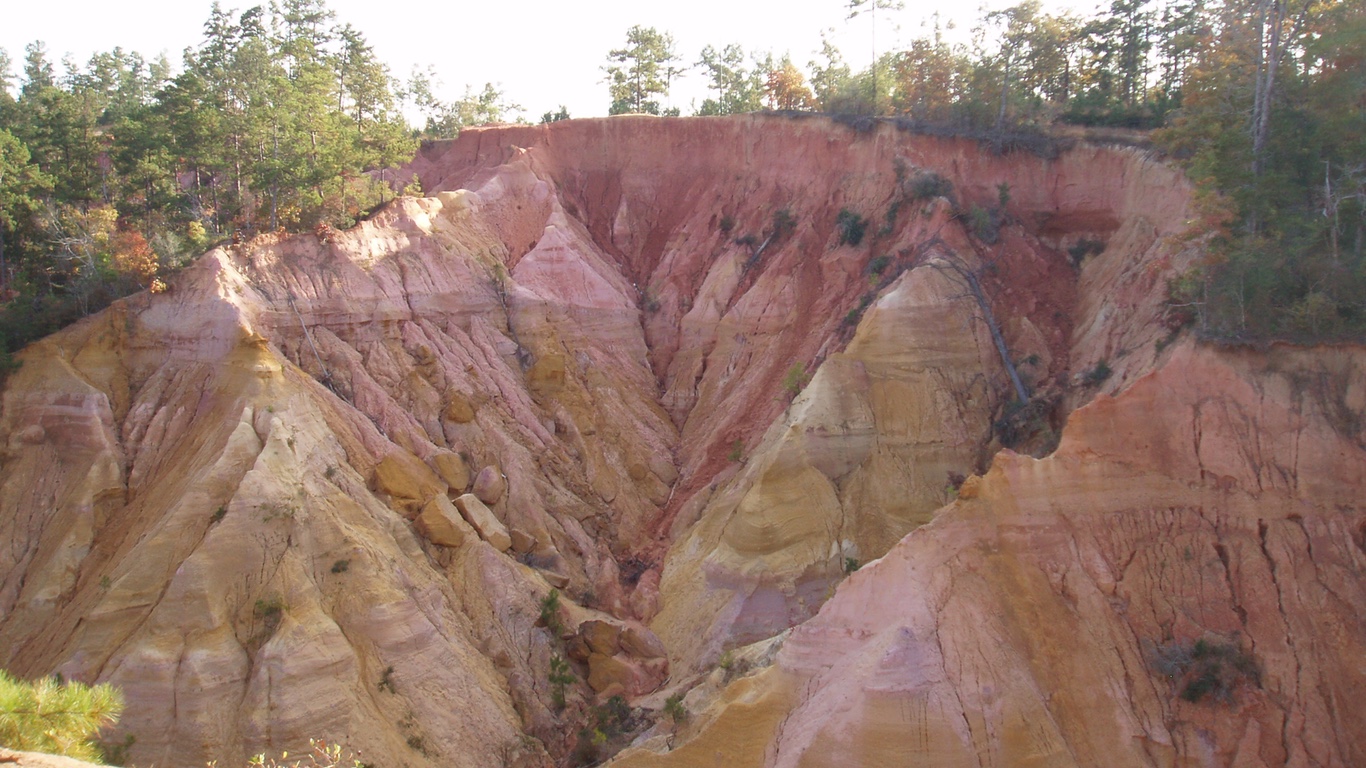
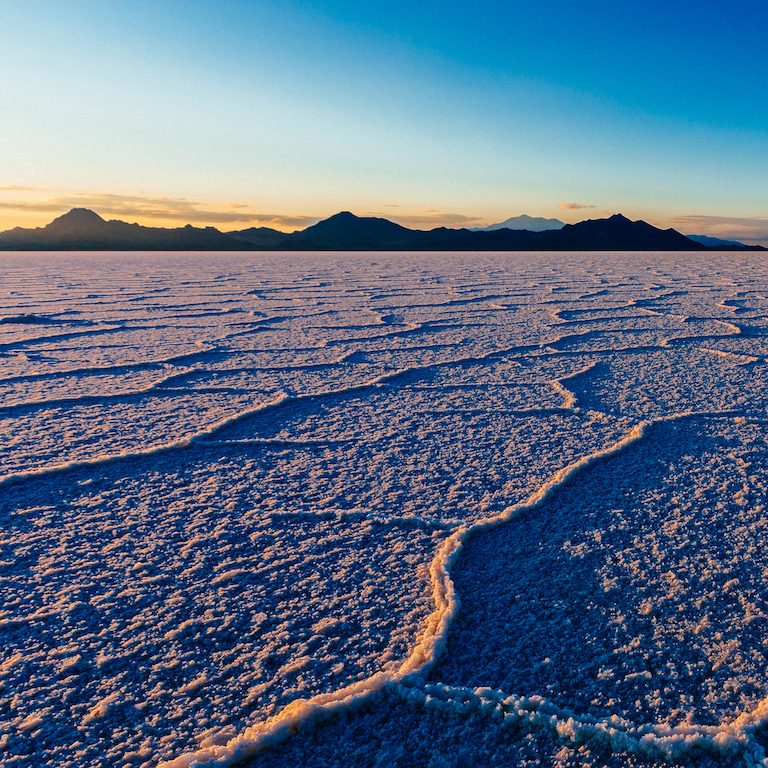 24/7 Wall St.
24/7 Wall St.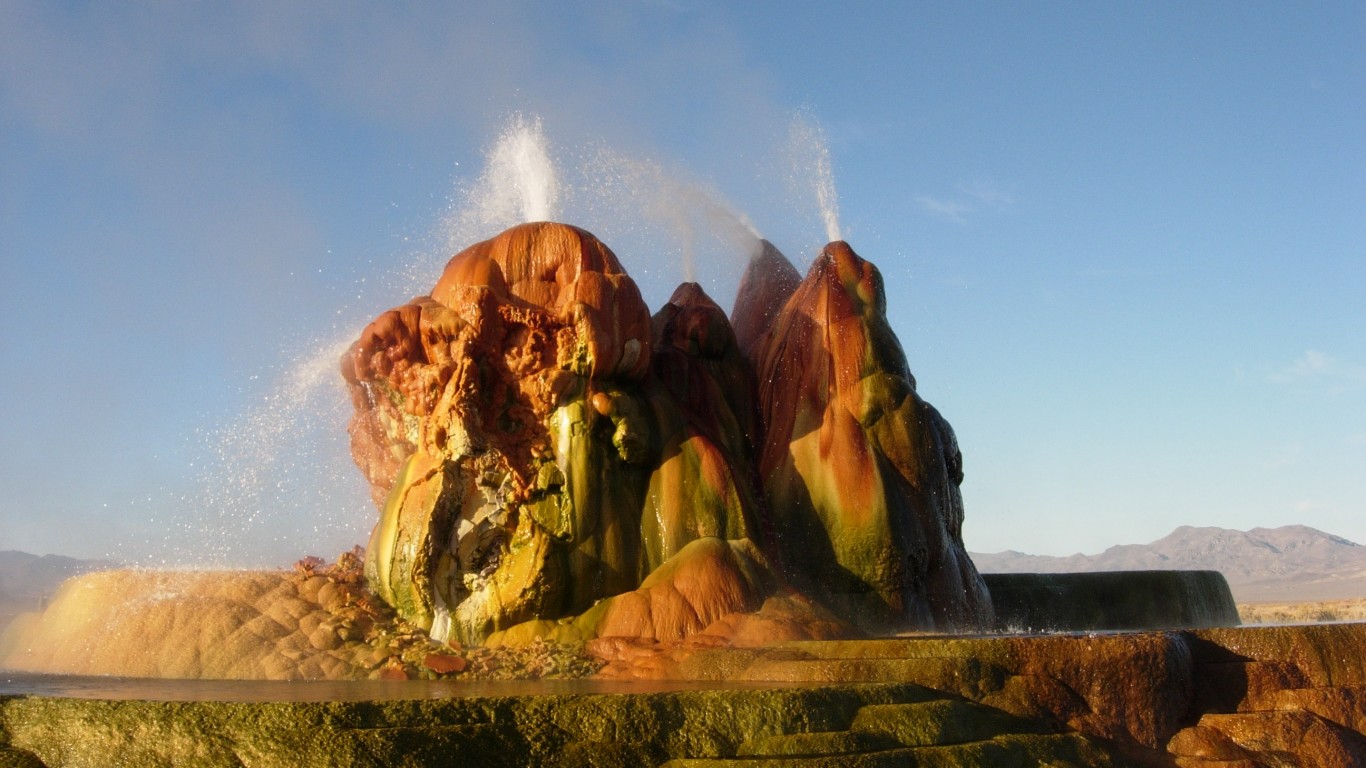
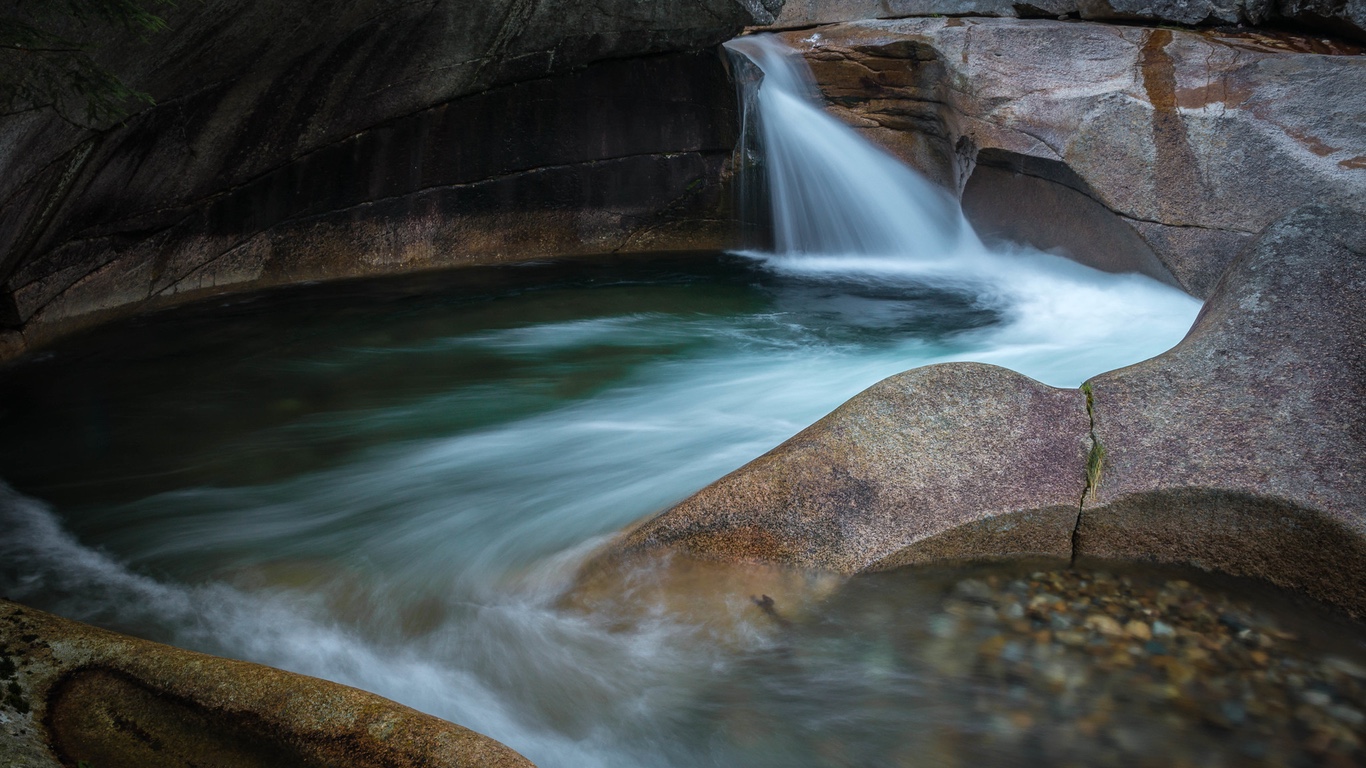
 24/7 Wall St.
24/7 Wall St.